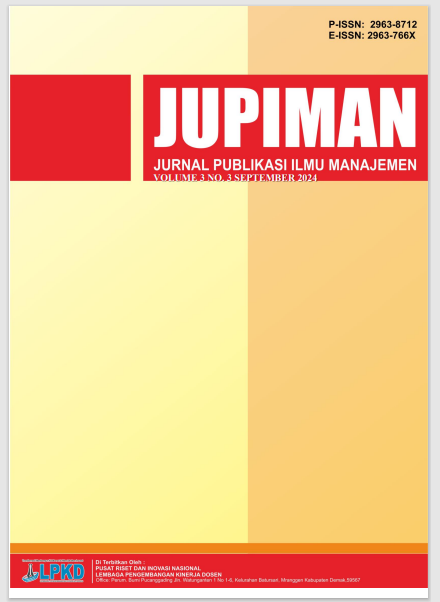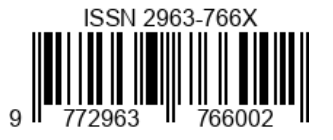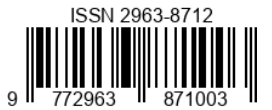Pengaruh Pendapatan Biaya Serta Efesiensi Beban Operasional Dalam Mengukur Kinerja Keuangan Perusahaan
Studi Kasus Pada Cv. Intiga Harapan Sukses
DOI:
https://doi.org/10.55606/jupiman.v3i3.4625Keywords:
Cost Revenue, Operational Efficiency, Financial PerformanceAbstract
Every company aims to achieve the greatest possible profit by considering the value of the benefits of its business activities. Profitability, which reflects the company's ability to generate revenue and profit, is one of the main aspects in evaluating the company's performance. Management, as the company's operational implementer, is responsible for the continuity of the operation. Management not only focuses on profit but also on how their business activities provide value to various stakeholders, as this can have a positive impact on the company's reputation and long-term sustainability. The results of the study show that the revenue aspect shows positive results. This revenue growth is influenced by successful market expansion, product diversification that attracts more consumers, and digital marketing strategies that increase brand visibility and customer engagement. The company's financial performance based on the cost aspect shows efficient management. Despite an increase in total operating costs, the cost-to-income ratio shows a stable trend, indicating that the company has succeeded in controlling costs without sacrificing efficiency and based on the profitability aspect shows a significant increase in gross profit and net profit. This increase in profitability reflects efficiency in managing operating costs and effective taxation strategies.
Downloads
References
Agatha, M. C., Lindrawati, L., & Susanto, A. (2024). Analisis kinerja keuangan sebelum dan saat pandemi COVID-19 pada perusahaan manufaktur. Jurnal Ilmiah Mahasiswa Akuntansi, 12(2), 76–90.
Alfan, D. B., Putra, D. P., Fadmawati, F., & Jakaria, R. B. (2024). Implementasi metode variable costing untuk menentukan biaya produksi pada perusahaan manufaktur. Jupiter: Publikasi Ilmu Keteknikan Industri, Teknik Elektro dan Informatika, 2(1), 147–157.
Atul, U. N., Sari, Y. N. I., & Lestari, Y. J. (2022). Analisis rasio keuangan untuk mengukur kinerja keuangan perusahaan. E-Jurnal Akuntansi Tsm, 2(3), 89–96.
Auliyah, I., & Saleh, W. (2024). Kinerja keuangan perusahaan ditinjau dari debt to equity ratio dan return on asset: Literature review. EKOMA: Jurnal Ekonomi, Manajemen, Akuntansi, 3(2), 1001–1011.
Belkaoui, A. R. (2014). Teori akuntansi (Edisi pertama). Jakarta: Salemba Empat.
Choiri, M., Chriswardhana, B., & Tjong, J. (2024). Peran manajer dalam meningkatkan kinerja keuangan Bank OCBC Tbk. Jurnal Manajemen, 9(2), 31–39.
Dewianawati, D. (2022). Analisa kinerja keuangan KPPRI dengan pendekatan laporan keuangan pada KPPRI. Owner: Riset dan Jurnal Akuntansi, 6(1), 454–470.
Dinas Pertanian dan Perkebunan Provinsi Kalimantan Selatan. (2023). Laporan tahunan sektor pertanian Kalimantan Selatan 2022. Banjarbaru: Dinas Pertanian dan Perkebunan Provinsi Kalimantan Selatan.
Hansen, D. R., & Mowen, M. M. (2013). Akuntansi manajerial (Edisi kedelapan). Jakarta: Salemba Empat.
Hermawan, I. (2019). Metodologi penelitian pendidikan: Kualitatif, kuantitatif, dan mixed method. Hidayatul Quran.
Ikatan Akuntan Indonesia. (2018). Pernyataan standar akuntansi keuangan (PSAK) No. 23: Pendapatan. Jakarta: Ikatan Akuntan Indonesia.
Ikatan Akuntan Indonesia. (2021). Standar akuntansi keuangan.
Kasmir. (2017). Analisis laporan keuangan. Jakarta: Rajagrafindo Persada.
Kieso, D. E., Weygandt, J. J., & Warfield, T. D. (2016). Akuntansi intermediate (Edisi kesepuluh). Jakarta: Erlangga.
Mulyadi. (2018). Akuntansi biaya. Yogyakarta: UPP STIM YKPN.
Sugiyono, P. (2019). Metode penelitian kuantitatif, kualitatif, dan R&D. Bandung: Alfabeta.
Undang-Undang Republik Indonesia Nomor 13 Tahun 2010 tentang Hortikultura.
Downloads
Published
How to Cite
Issue
Section
License
Copyright (c) 2024 Jurnal Publikasi Ilmu Manajemen

This work is licensed under a Creative Commons Attribution-ShareAlike 4.0 International License.








